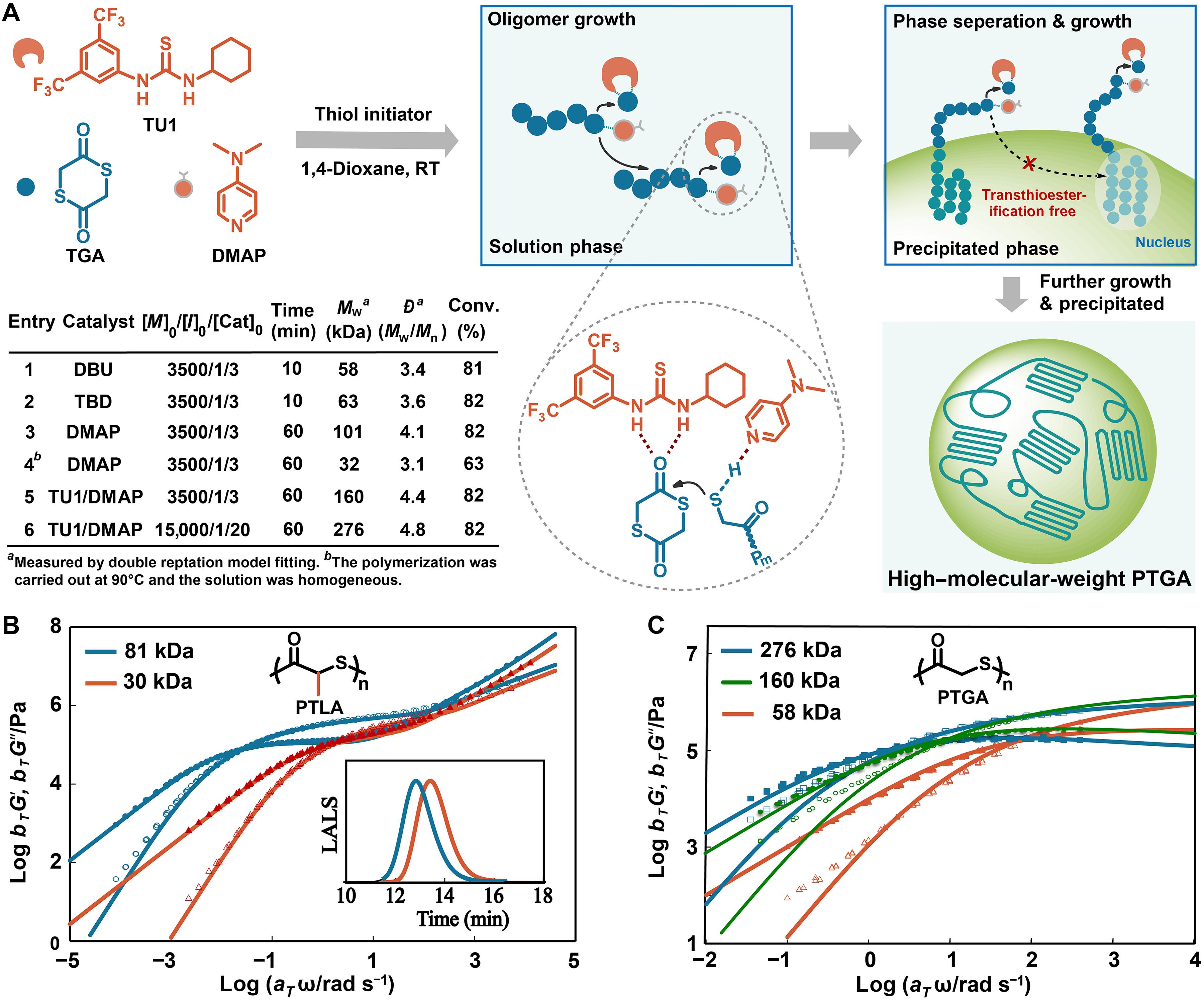界面链生长聚合使类聚丙烯和圆形聚硫甘油酯成为可能
IF 12.5
1区 综合性期刊
Q1 MULTIDISCIPLINARY SCIENCES
引用次数: 0
摘要
开发不可降解/可回收聚烯烃的化学循环替代品的研究大多集中在具有可切割键的类聚乙烯材料上,但创造一种具有与等规聚丙烯(iPP)相匹配的高性能性能的循环替代品更具挑战性,iPP占全球聚烯烃产量的40%。在这里,我们介绍了高分子量聚(巯基乙酸)(PTGA),它不仅具有闭环可回收性,而且具有类似ipp的热性能,甚至优越的机械和屏障性能,以及非常适合吹塑成瓶等常见加工技术的可加工性。为了避免巯基甘油酯开环聚合(ROP)中广泛的转硫酯化副反应的长期挑战,通常只产生低聚物,我们开发了发生在半晶聚合物表面和单体有机催化剂溶液相之间的界面链生长ROP,使高分子量PTGA的合成成为可能。总的来说,我们表明PTGA是一种可扩展的圆形聚合物,具有类似ipp的特性,并且界面ROP方法解决了典型的溶液相聚合的挑战。本文章由计算机程序翻译,如有差异,请以英文原文为准。

Interfacial chain-growth polymerization enables polypropylene-like and circular polythioglycolide
Much of research on developing chemically circular alternatives to nondegradable/recycle polyolefins has focused on polyethylene-like materials with cleavable bonds, but it is more challenging to create a circular alternative of matched high-performance properties to isotactic polypropylene (iPP) that accounts for 40% of polyolefins produced worldwide. Here, we introduce high–molecular-weight poly(thioglycolic acid) (PTGA) that exhibits not only closed-loop recyclability but also iPP-like thermal properties, even superior mechanical and barrier properties, and processability well suited for common processing techniques such as blow molding into bottles. To circumvent long-standing challenges of extensive transthioesterification side reactions in the ring-opening polymerization (ROP) of thioglycolide, which typically yielded only oligomers, we developed the interfacial chain-growth ROP occurring at the interface between the semicrystalline polymer surface and the monomer–organocatalyst solution phase, enabling the synthesis of high–molecular-weight PTGA. Overall, we show that PTGA is a scalable circular polymer that provides iPP-like properties and that the interfacial ROP method solves the challenges in typical solution-phase polymerization.
求助全文
通过发布文献求助,成功后即可免费获取论文全文。
去求助
来源期刊

Science Advances
综合性期刊-综合性期刊
CiteScore
21.40
自引率
1.50%
发文量
1937
审稿时长
29 weeks
期刊介绍:
Science Advances, an open-access journal by AAAS, publishes impactful research in diverse scientific areas. It aims for fair, fast, and expert peer review, providing freely accessible research to readers. Led by distinguished scientists, the journal supports AAAS's mission by extending Science magazine's capacity to identify and promote significant advances. Evolving digital publishing technologies play a crucial role in advancing AAAS's global mission for science communication and benefitting humankind.
 求助内容:
求助内容: 应助结果提醒方式:
应助结果提醒方式:


